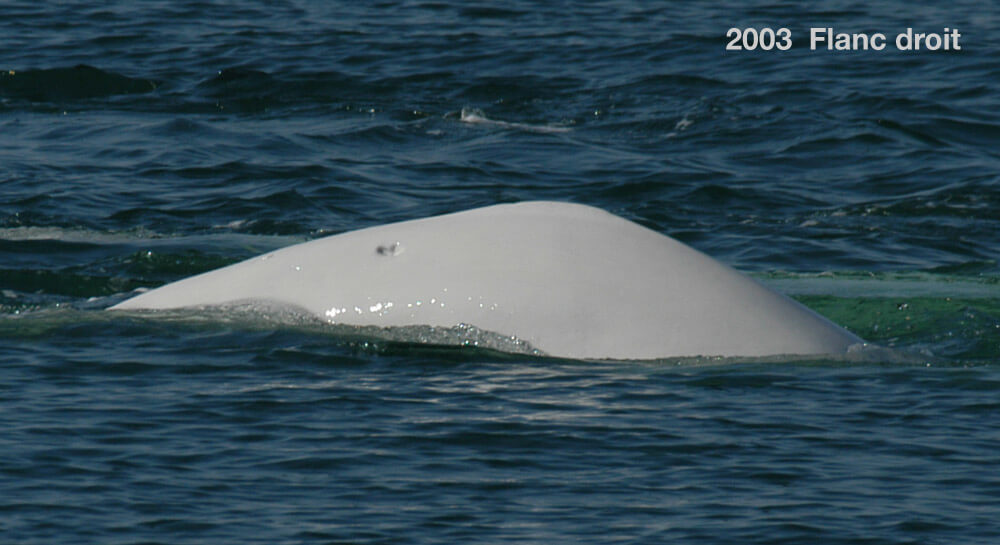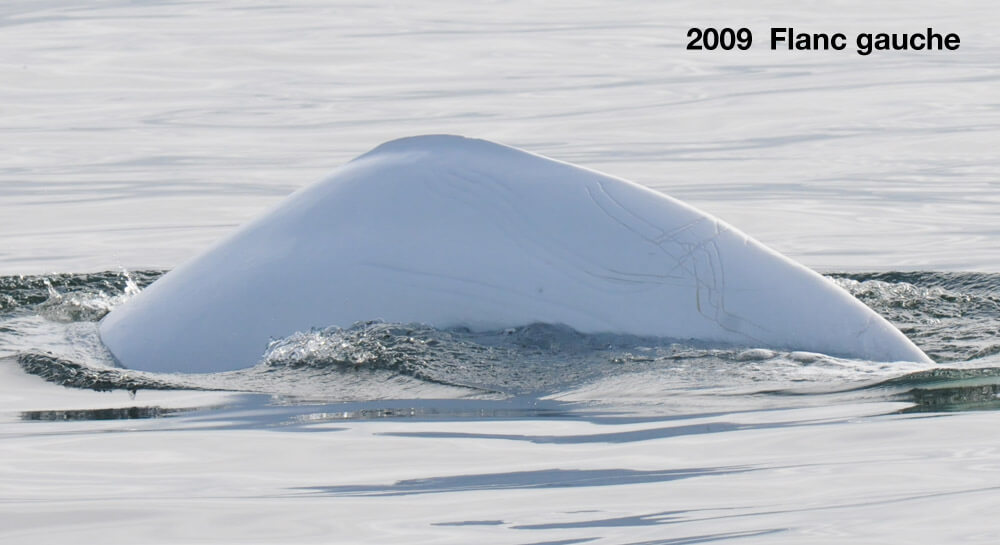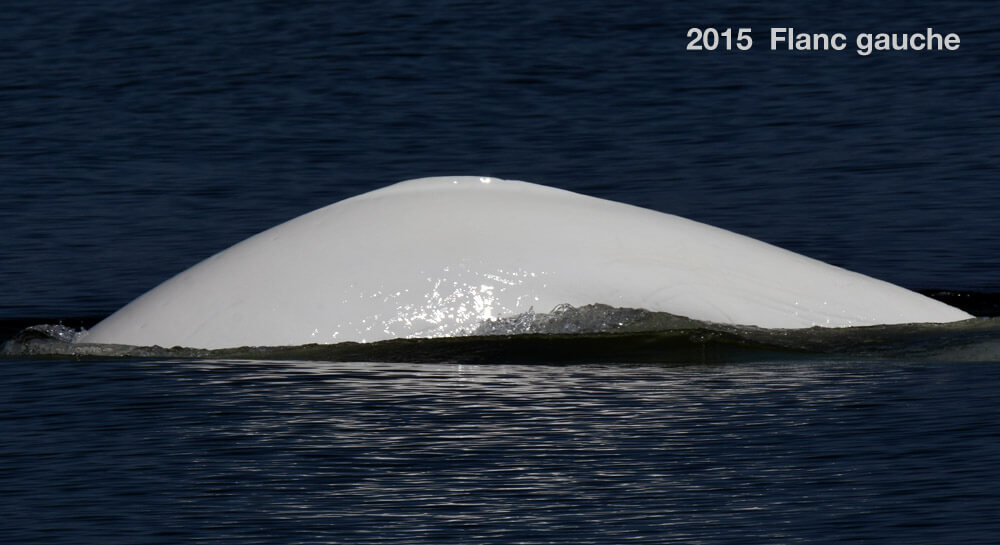DL2023
Beluga


Adopted by la Microbrasserie de Tadoussac
-
ID number
DL2023
-
Sex
Male
-
Year of birth
Before 1988
-
Known Since
2003
Distinctive traits
DL2023 shows a deep scar on his right flank. This characteristic is located near the end of his dorsal crest.
Life history
When we first encountered him, DL2023’s skin was already completely white. Belugas fade from gray to white in colour between the ages of 12 and 16, meaning that DL2023 would have been born before 1988.
His size, habits and associations suggest that DL2023 is a male. DL2023 has often been observed in large herds of young bulls or in the downstream parts of the species’ summer range in the company of adult males. Given that belugas show strong sexual segregation and on account of DL2023’s size, we believe that this individual is a male.
As the years pass by, males have a tendency to form stable groups of companions. These associations may play a role in belugas’ reproductive lives. Although DL2023 has been seen on few occasions with Splash, Cumulus and DL1328, he is not yet known to have a faithful companion.
How DL2023’s story unfolds will teach us volumes on the evolution of belugas’ social lives. Who will his lifelong companions be? Will he continue to frequent the same geographic sectors? By better understanding how belugas live, we will be able to better protect them.
Observations history in the Estuary
Years in which the animal was not observed Years in which the animal was observed
Latest news
We’re off the coast of Les Escoumins on board the BpJAM, our inflatable research boat. The sun glare on the water prevents us from obtaining an accurate count, but we have at least 70 belugas in front of us. We approach a cluster of 5 individuals to photo-identify them. All of a sudden, we start seeing pectoral fins poking above the surface and tails being lifted out of the water. We slip on our hockey helmet and leather gloves as we gear up to launch the drone. We also drop a hydrophone into the water to record the beluga’s vocalizations.
Once the drone has achieved lift-off, we observe the whales’ behaviours. The animals’ broad shoulders indicate that we are dealing with a group of bulls. They are strongly interacting, grazing and jostling one another. Within the group, we recognize Écho, Gaston, Solidaire, Lugi, DL2023 and DL0058. The herd splits into smaller groups of ten or so individuals, while a few of the animals are swimming alone. Two young grey belugas and one that is almost white – what we would call dirty white – approach the boat and and begin to nibble on our hydrophone. The animals pick up their pace and we film for the twenty minutes of battery life we have left before departing to search for another group. We patiently learn to better understand DL2023, its habits and who its acquaintances are.
The GREMM’s research boat – the Bleuvet – is 2 nautical miles off the coast of Cacouna. We’re observing a herd of eight individuals: four white adults and four young grays. One of the animals shows a conspicuous hole in its right flank; it’s DL2023! In his company is one individual that we qualify as “dirty white”, meaning it has not yet acquired the complete white colour of adulthood.
We position the Bleuvet so as to take a biopsy from DL2023, which will allow us to confirm its sex and learn a little more about its DNA. Unfortunately, DL2023 outmanoeuvres us and we miss our target. Immediately afterwards, the herd splits into two groups that move in opposite directions. We attempt to follow them, but they appear to have vanished… into the water! We search for a good half hour, but in vain. We’ll have to wait for another encounter to discover the secrets hidden in DL2023’s fat.
Sponsor
The Microbrasserie de Tadoussac will give 0,10$/litre of the Pale (wh)Ale beer sold.






